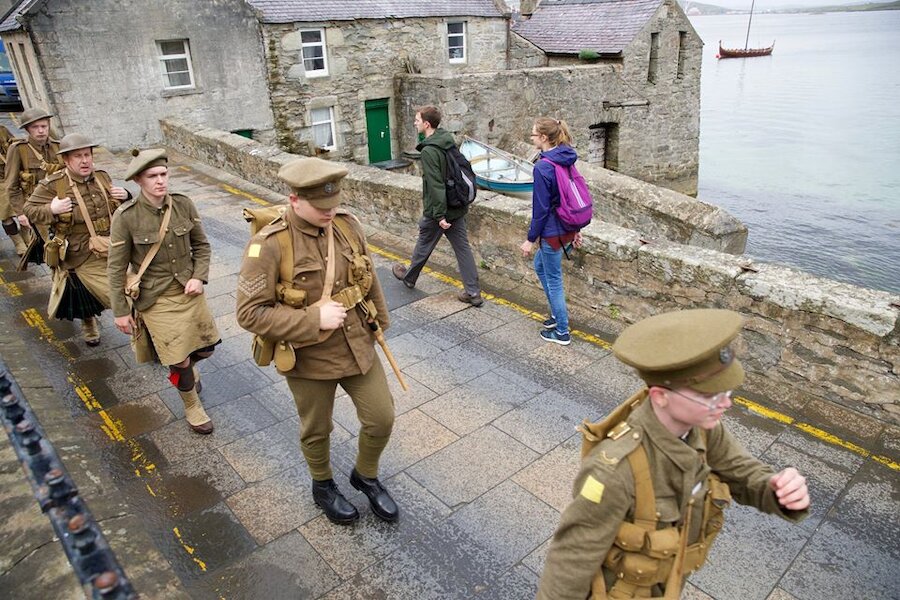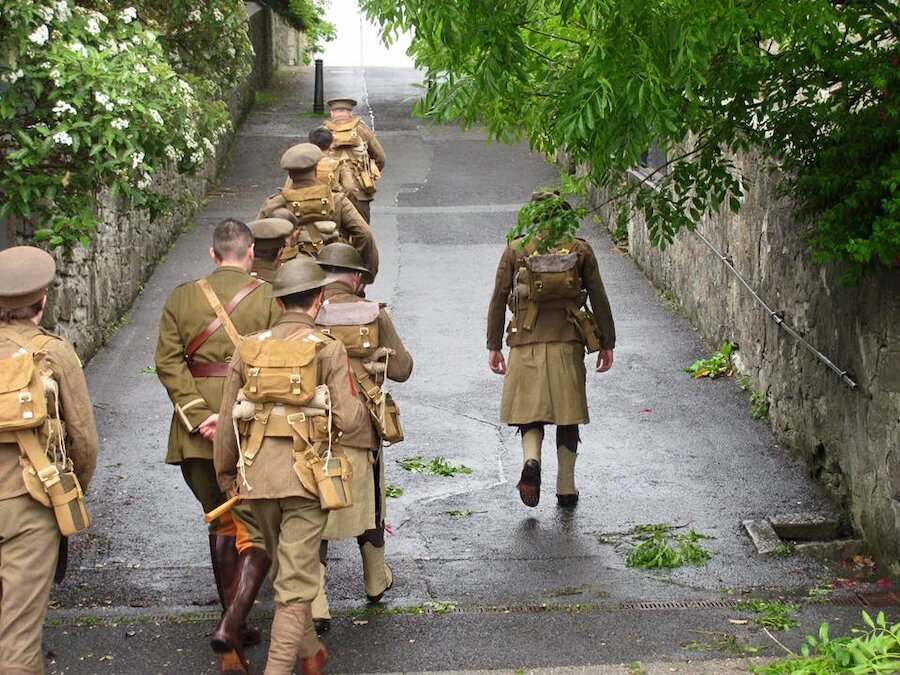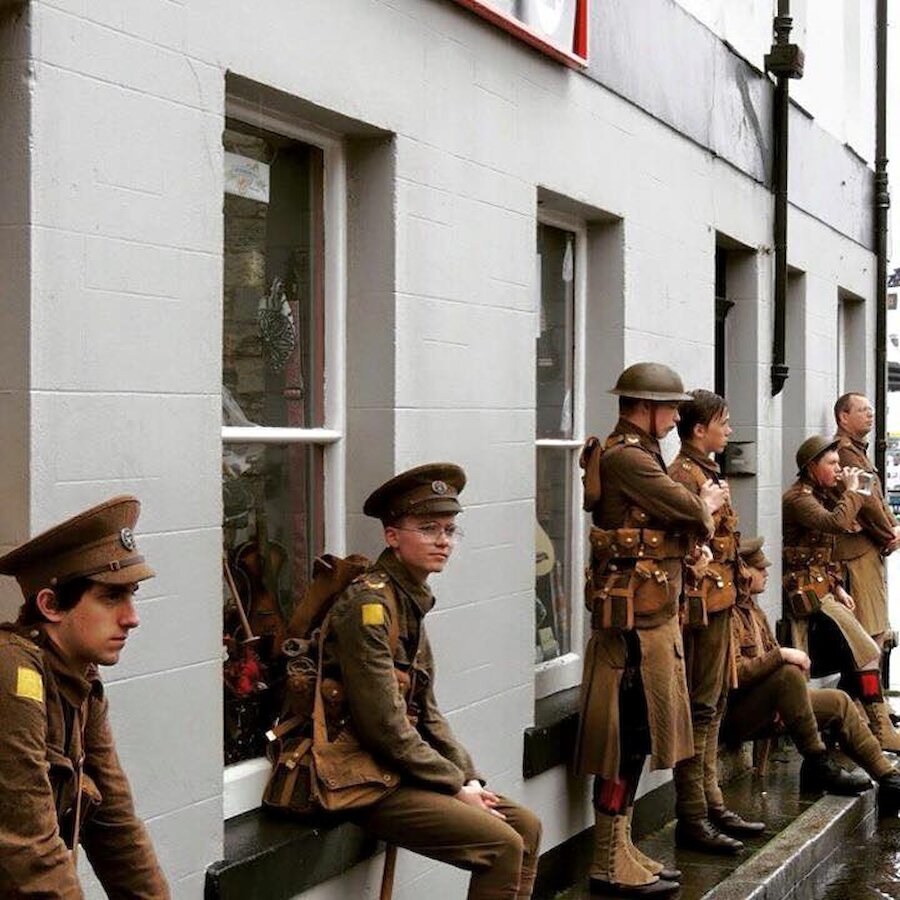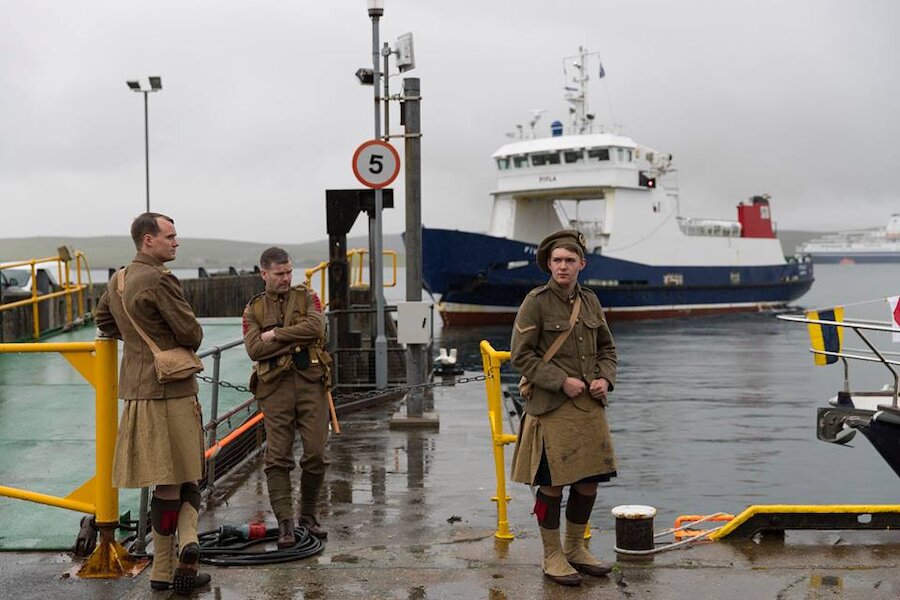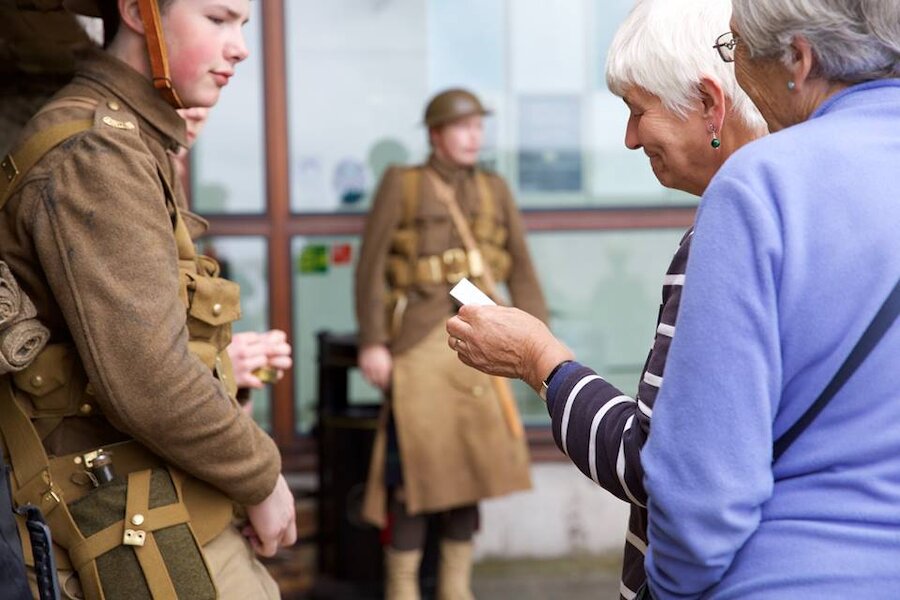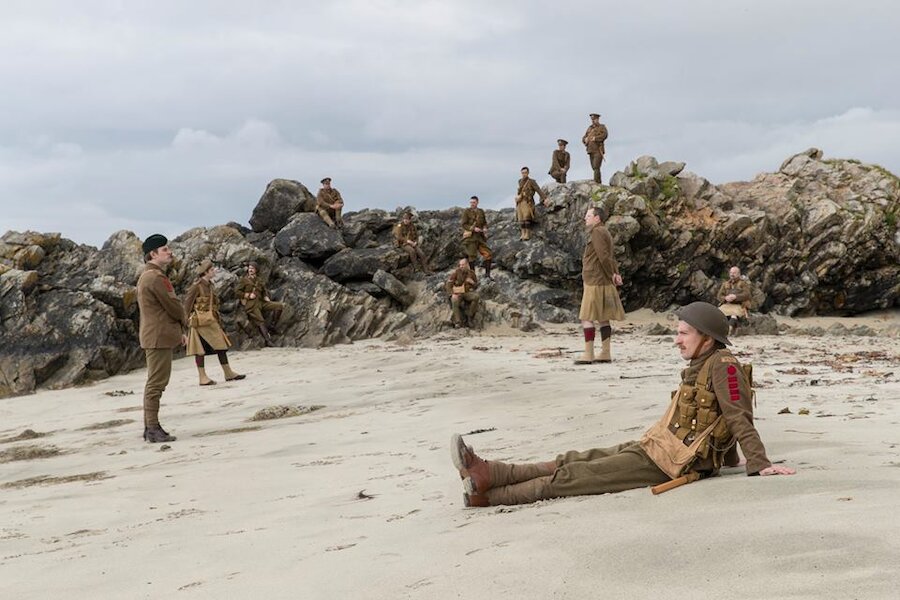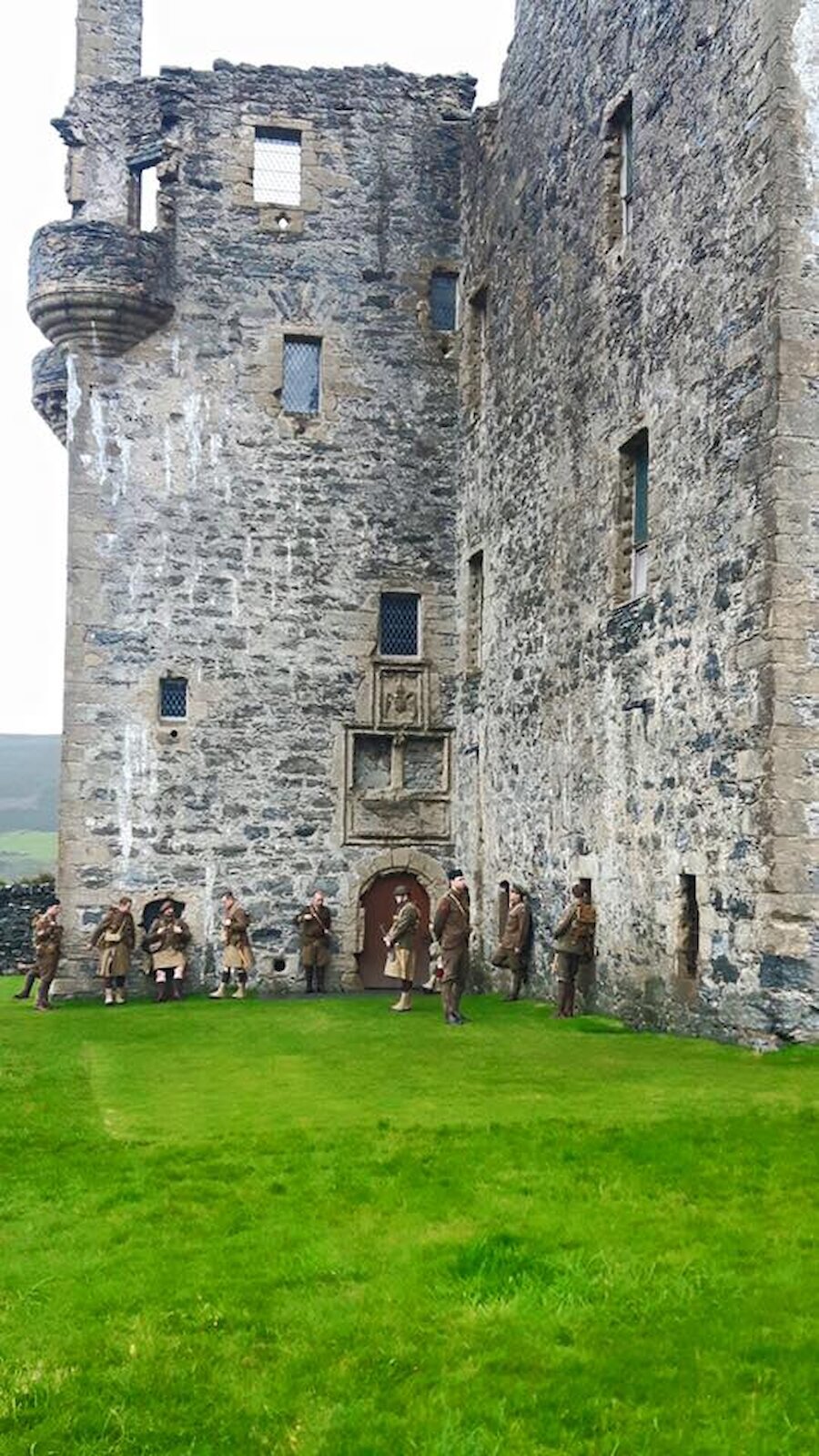It was an extraordinarily moving sight, all the more striking for being entirely unexpected. The young men marching through Lerwick were, unmistakeably, soldiers from the First World War, instantly recognisable from the shaky, chalk-and-charcoal films that recorded that awful conflict.
...an extraordinarily moving sight...
On 1 July, the 100th anniversary of the beginning of the battle of the Somme, the nation reflected on a day in which 20,000 British soldiers died and 40,000 were injured. The occasion was marked internationally at Thiepval in northern France, where Sir Edward Lutyens’ huge memorial honours the 72,000 men whose bodies were never found after the conflict.
The beginning of the battle was also marked in other ways across Britain, often at vigils and church services, but in Shetland, as in London, Glasgow and a number of other cities, a project organised by the National Theatre and the National Theatre of Scotland brought 21st century citizens face to face with representatives of those who had made the ultimate sacrifice.
...no hint of what was to take place escaped...
The participants who were to play the roles of soldiers who died a century ago were given information about the men they represented, and each of them carried with them a supply of cards that gave brief details of the man concerned. If a member of the public approached a soldier, he would hand them a card, but that was all: there was no other communication. Faces were expressionless.
...an agonised roar...
The soldiers almost 40 of them, were in evidence at several places across the islands, appearing at St Ninian’s Isle, in Scalloway and all over Lerwick. Locally, a number of people, apart from the soldiers, were involved in bringing the project to fruition, with the event being managed by Lisa Ward. I am grateful to her and to Paul Riddell of Platform Shetland for the photographs.

